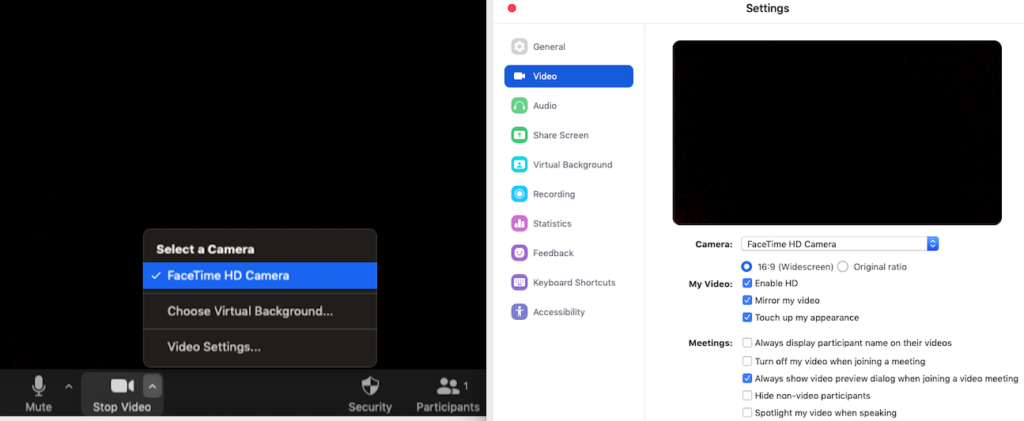As you’re planning your marketing and content strategies for the new year, video and audio continue to grow faster than ever, especially after this year where most people are now leveraging zoom, podcasts, and video conferencing than ever before. At my PR agency, HAPPY PR, our clients have shifted to doing zoom media interviews instead of in-studio interviews. I was able to do my holiday media tour from the comfort of my home for the second year in a row (sure did not miss those red-eye flights but I did miss seeing media friends in person!).
I do a lot of virtual media interviews, podcast recordings, and video trainings, and I prep my AMPLIFY PR students with best practices and recommendations so they can have successful video/audio interviews, too.
Whether you’re being interviewed on a podcast or making a piece of video content, these go-to resources and tips should help you increase your production quality and get more eyes on your content!
Your Tech + Background Set-up
The first step to preparing for a virtual interview is picking a backdrop that is as intriguing yet as professional as possible.
For a thought leadership interview, a simple office backdrop is just fine, but here are a few things to keep in mind:
- Remove any clutter
- A plain white wall is better than a bedroom or messy/distracting background
- Make sure you have great lighting. I use this inexpensive ring light to help boost the appearance of my Zoom interviews.
- This is my recommended webcam for better HD-quality videos.
- This is my recommended microphone for podcasts.

HAPPY PR client MIG Living does a virtual thought leadership interview.
For demonstration or product-based interviews, it’s better to set up at a table and display your products or visuals. You can stand behind the table and present.
- This will likely require a separate webcam or microphone to pick-up your audio better
- Test this entire set-up by recording a test interview on zoom and playing it back to ensure you have good audio/video quality

HAPPY PR Retail Client Duffield Lane does a virtual media interview from their shop.
Zoom Settings
Once you have your backdrop and audio/video tech set up, make sure your Zoom settings are ready ahead of time.
- Plan to join your zoom call 10 minutes in advance; you never know when you’ll have technical difficulties
- Test your microphone + audio in advance (zoom will offer this before you join a call)
- Under preferences and video settings:
- Turn on “enable HD” + “brush up appearance” setting (see images below)

Your Media Interview
Energy – Ultimately, the media wants engaging, interesting guests that will keep the attention of their audience. Working as a TV news reporter, I learned that I had to double or triple my natural energy level just to come across as “normal” on camera.
Smile! Unless the interview is about a serious subject matter, you will want to smile as much as possible. This may feel a bit awkward, but it comes across as natural on-camera, and you’ll avoid looking bored. When you’re not talking, try to keep an engaged appearance with occasional head nods and smiles.
Clothing – Avoid busy patterns, tight horizontal stripes, or distracting jewelry/accessories. This is another area to plan in advance; open your Zoom or webcam and consider how different outfits appear on the screen.
Find the formula that works best for you -this could be a simple tank/shirt + jacket combo, a sweater, branded shirt, etc. Once you know what colors & styles look best, stick to that formula to make future interview prep easy!
Practice
The best way to feel confident going into a media interview is to practice it.
Most media segments are only a few minutes long. It goes faster than you may expect, so make sure to keep the segment flowing by keeping your answers interesting yet concise.
Use your phone timer and make sure you have enough time to adequately demonstrate and/or talk about each of your main talking points. If you find yourself running out of time, you may want to adjust your talking points.
And plan what you’ll do if you still run out of time or the host starts to wrap before you’re ready. Make sure you have a closing line that you can jump to that tells the audience your call-to-action (what do you want them to do? Buy your book? Donate to the cause? Go to your website to learn more?). This usually looks like a quick recap of what they can do next and how to find you.
Prepare for the unexpected.
Mistakes can happen and the interviewer may throw you a curveball, say something random, or call you by the wrong name. So be ready to go with the flow, and follow your talking points!
Be Confident!
You’ve prepared, you’ve done the work and the media is interviewing you for a reason! Your confidence will come across to the audience and help you to reach your PR goals- whether that is to increase credibility, brand recognition, or sales.
After you’ve had your interview, it’s always a great idea to send a follow-up email and thank the host/producer. This helps you build a strong relationship that will benefit your brand in the future.
Wondering how to land that interview opportunity in the first place? Check out my free publicity guide!
Connect